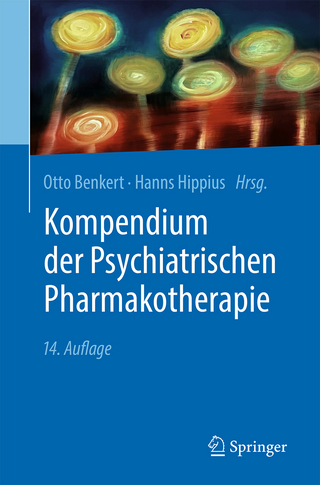
Psychotropic Agents
Springer Berlin (Verlag)
978-3-642-67769-4 (ISBN)
This second volume continues the description of the psychotropic agents and discusses anxiolytics, gerontopsychopharmacological agents, and psychomotor stimulants. Of these groups of substances, most of this volume has been devoted to anxiolytics as the authors have endeavored to convey as complete a picture as possible. The editors are of the opinion that particular attention should be given to anxiolytics with regard to their range of administration as this is the most frequently prescribed group of psychotropic drugs. In contrast to neuroleptics and thymoleptics, anxiolytics are a class of psychotropic drugs whose therapeutic effect can be recognized in animal experiments to some extent. This, together with the analysis of the biochemical mechanisms of their actions, permits a better understanding of material processes in the brain accompanying the emotions: anxiety and tension. For the first time in the history of the Handbook the editors have devoted a whole chapter to gerontopsychopharmacological agents. In doing so they are also aware of the risk they are taking, at least from a pharmacological point of view, as gerontopsychopharmacological agents are an insufficiently defined and extremely heterogeneous group of substances. The only denominator the various subgroups of these agents have in common is that they are given in cases of dysfunctions, disorders, and diseases of the brain occurring mainly in the elderly.
Anxiolytics.- 1 The Chemistry of Anxiolytics.- 2 General Pharmacology and Neuropharmacology of Benzodiazepine Derivatives.- 3 General Pharmacology and Neuropharmacology of Propanediol Carbamates.- 4 Behavioral Pharmacology of Anxiolytics.- 5 Biochemical Effects of Anxiolytics.- 6 Pharmacokinetics and Metabolism of Anxiolytics.- 7 Toxicology and Side-Effects of Anxiolytics.- 8 Dependence-Producing Effects of Anxiolytics.- Gerontopsychopharmacological Agents.- 9 Chemistry of Gerontopsychopharmacological Agents.- 10 Pharmacologic Approaches to Gerontopsychiatry.- 11 Experimental Behavioral Pharmacology of Gerontopsychopharmacological Agents.- 12 Cerebrovascular Agents in Gerontopsychopharmacotherapy.- 13 Biochemical Effects of Gerontopsychopharmacological Agents.- Psychomotor Stimulants.- 14 The Pharmacological Profile of Some Psychomotor Stimulant Drugs Including Chemical, Neurophysiological, Biochemical, and Toxicological Aspects.- 15 The Behavioral Pharmacology of Psychomotor Stimulant Drugs.- 16 The Dependence-Producing Properties of Psychomotor Stimulants.- Author Index.
| Erscheint lt. Verlag | 15.11.2011 |
|---|---|
| Reihe/Serie | Handbook of Experimental Pharmacology |
| Co-Autor | C. Braestrup |
| Zusatzinfo | XXVI, 780 p. |
| Verlagsort | Berlin |
| Sprache | englisch |
| Maße | 170 x 244 mm |
| Gewicht | 1365 g |
| Themenwelt | Medizin / Pharmazie ► Medizinische Fachgebiete ► Pharmakologie / Pharmakotherapie |
| Medizin / Pharmazie ► Pharmazie ► PTA / PKA | |
| Schlagworte | 1,4-Benzodiazepin • Acetylcholin • Agents • Chemistry • Histamin • Hormone • Hypothalamus • Neurotransmitter • Pharmacodynamics • Pharmacokinetics • pharmacology • Prostaglandin • respiration • Serotonin • Toxicology • Xanthin |
| ISBN-10 | 3-642-67769-X / 364267769X |
| ISBN-13 | 978-3-642-67769-4 / 9783642677694 |
| Zustand | Neuware |
| Informationen gemäß Produktsicherheitsverordnung (GPSR) | |
| Haben Sie eine Frage zum Produkt? |
aus dem Bereich


